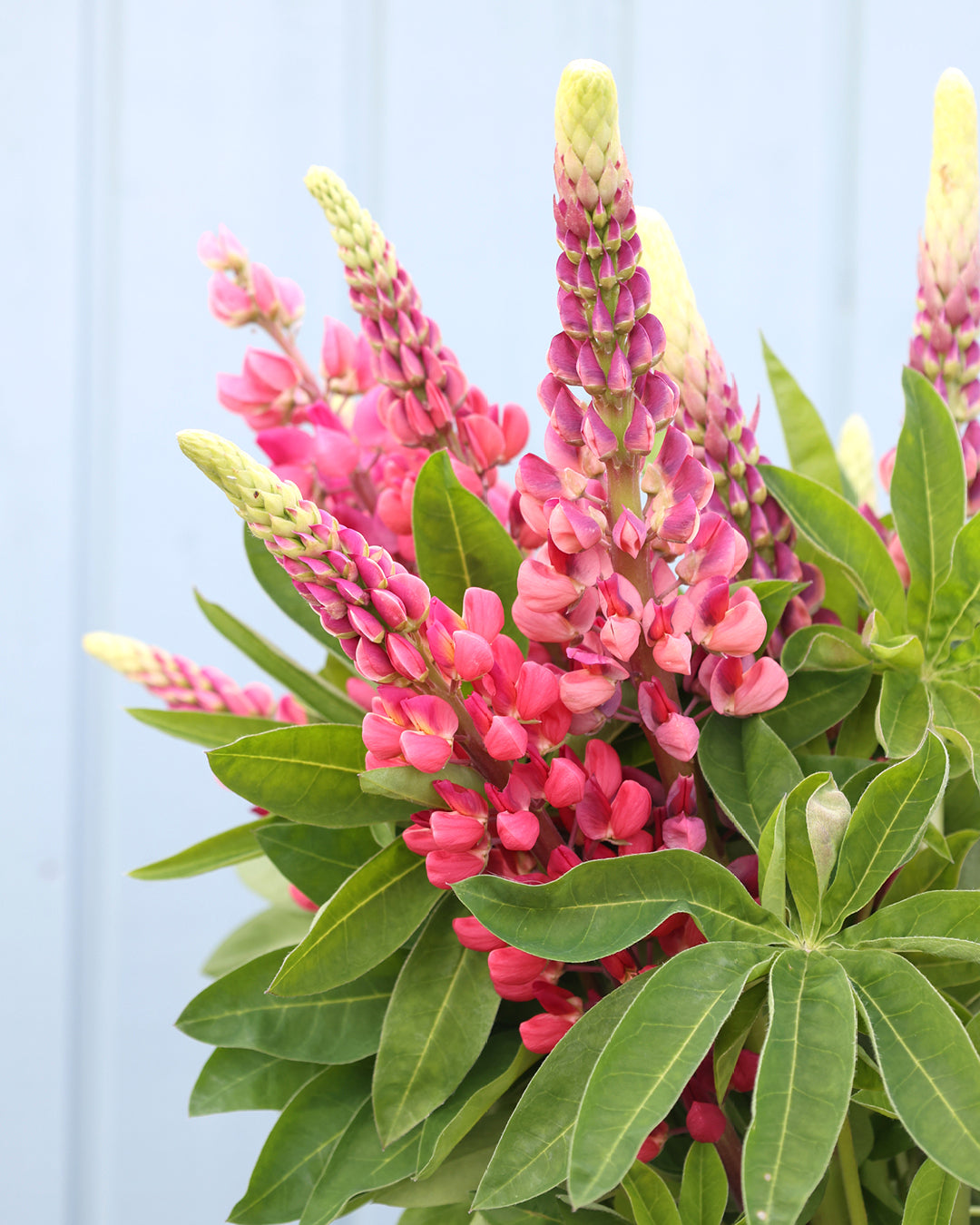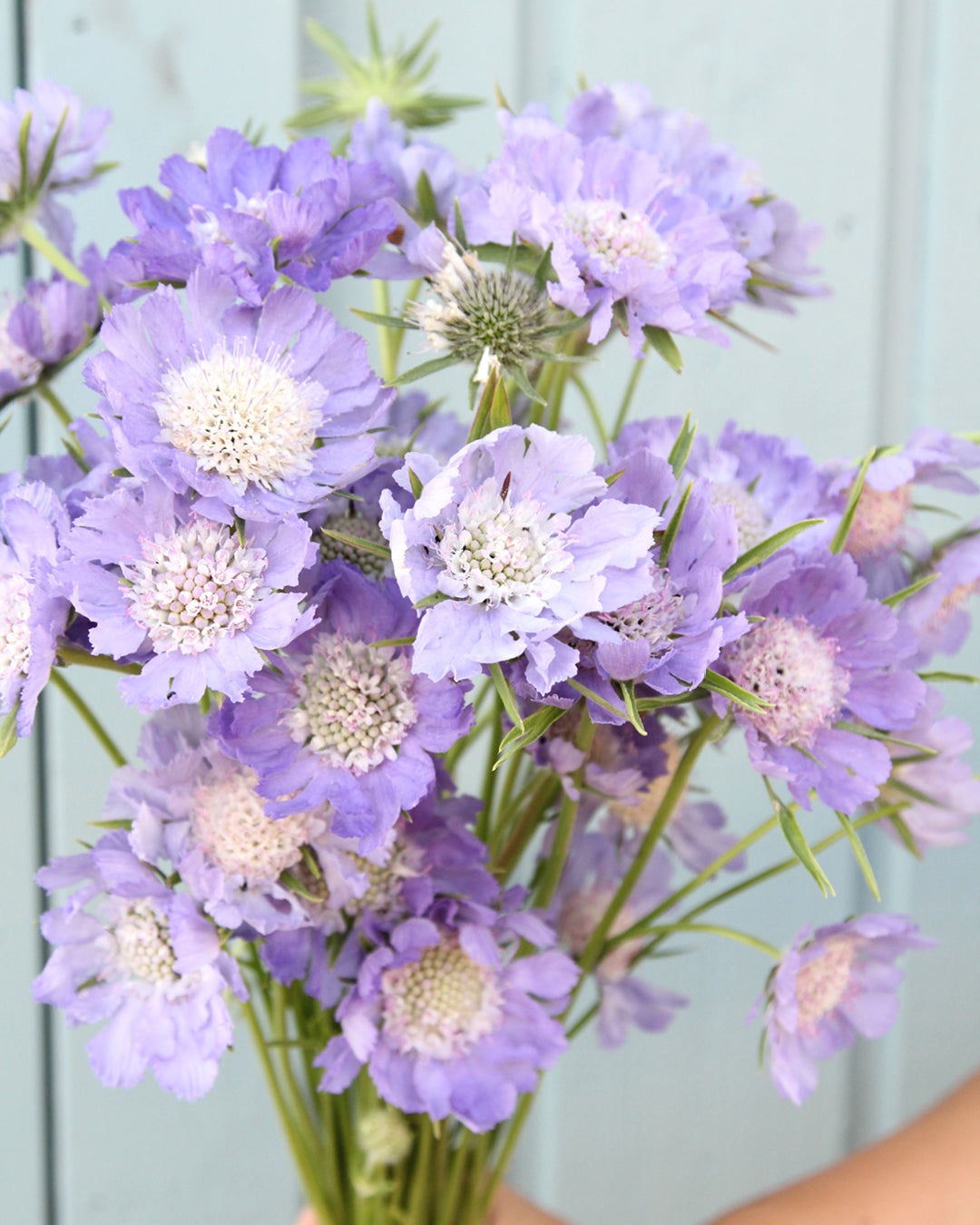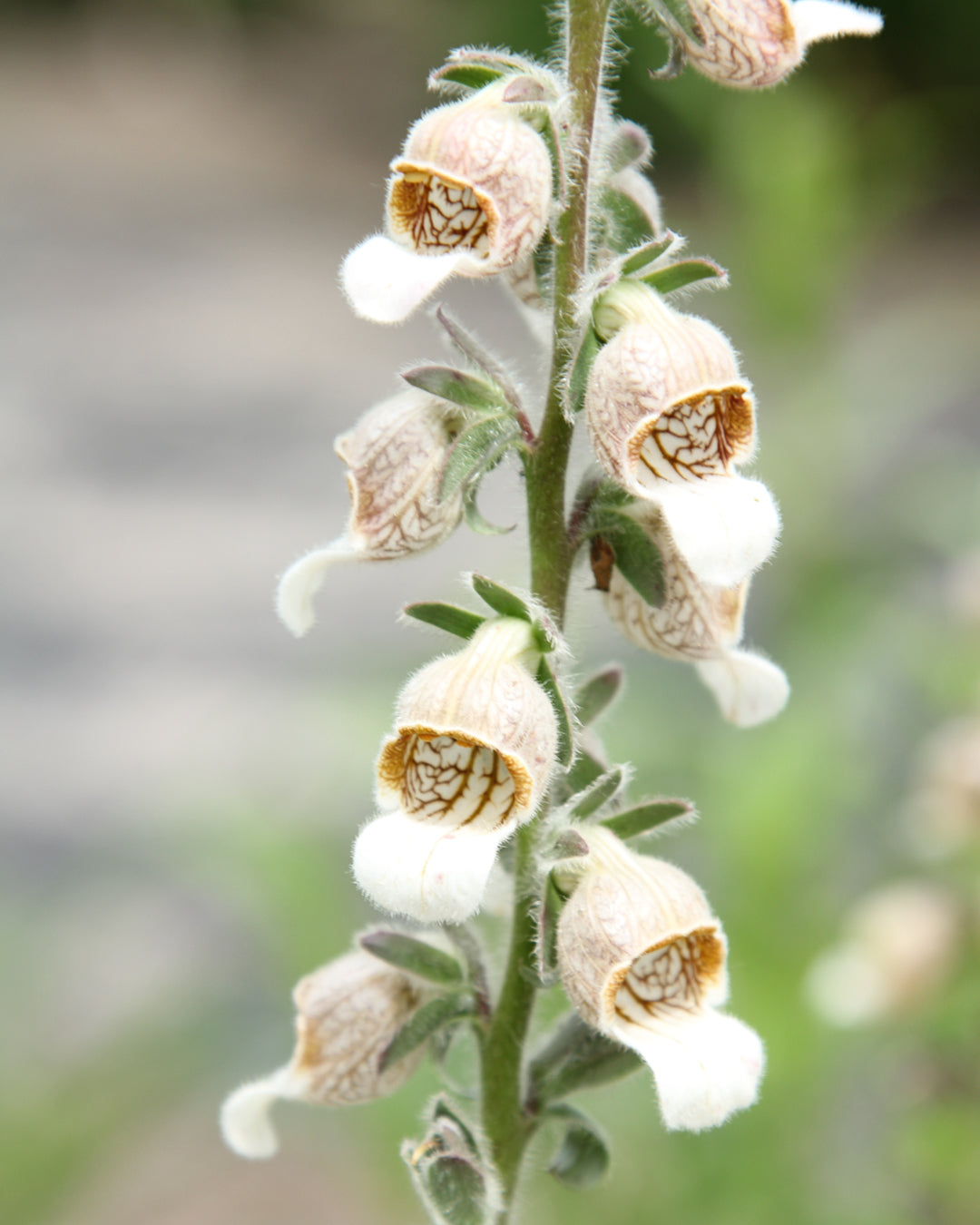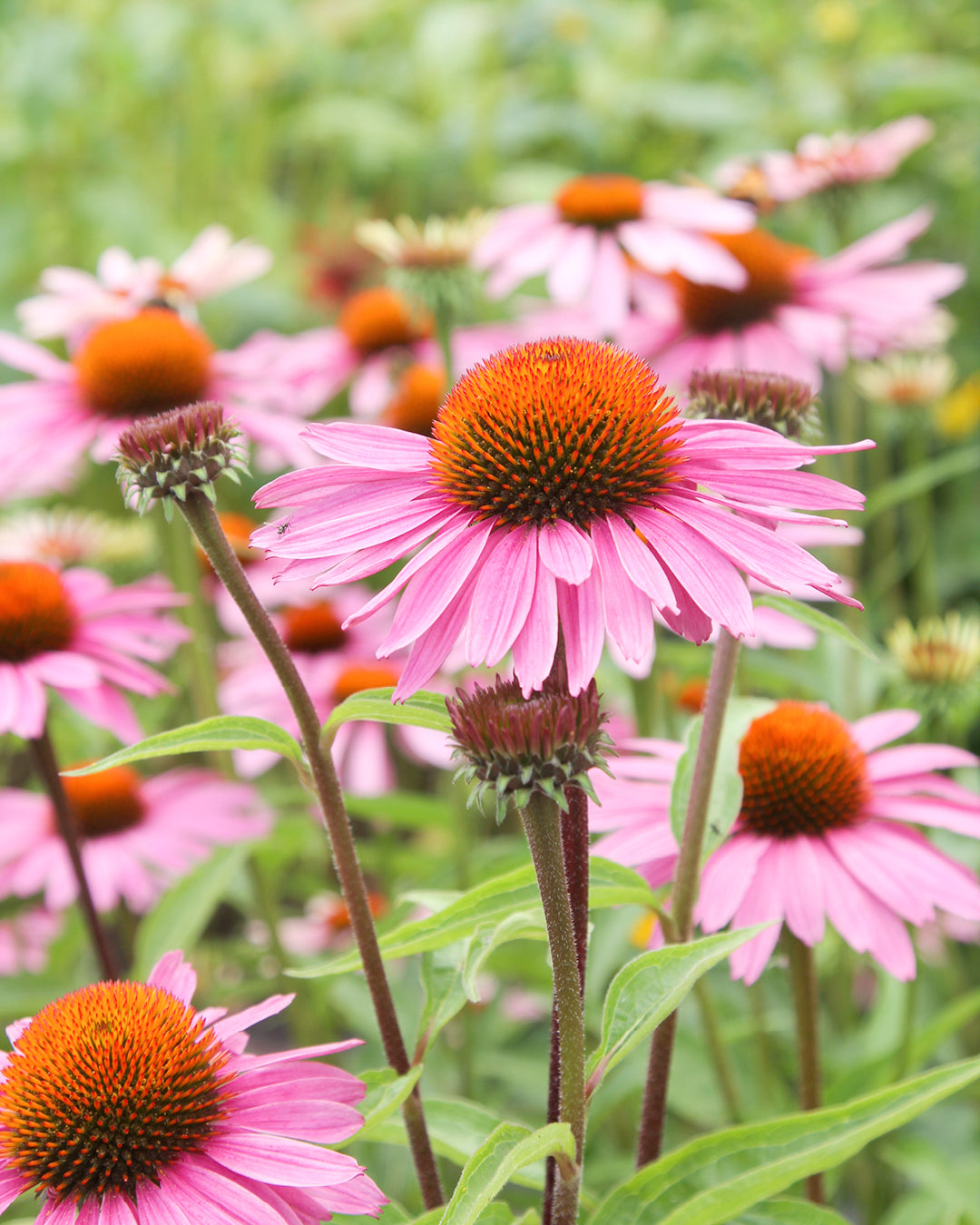Perennial knotweed
The knotweed family impresses with its numerous species and colors. The vibrant red of Bistorta amplexicaule 'Speciosum,' for example, colors entire fields. There are species for rock gardens, beds, borders, and wild perennial plantings. The versatility and luminosity of this family is reason enough to take a closer look and discover its benefits in the garden.
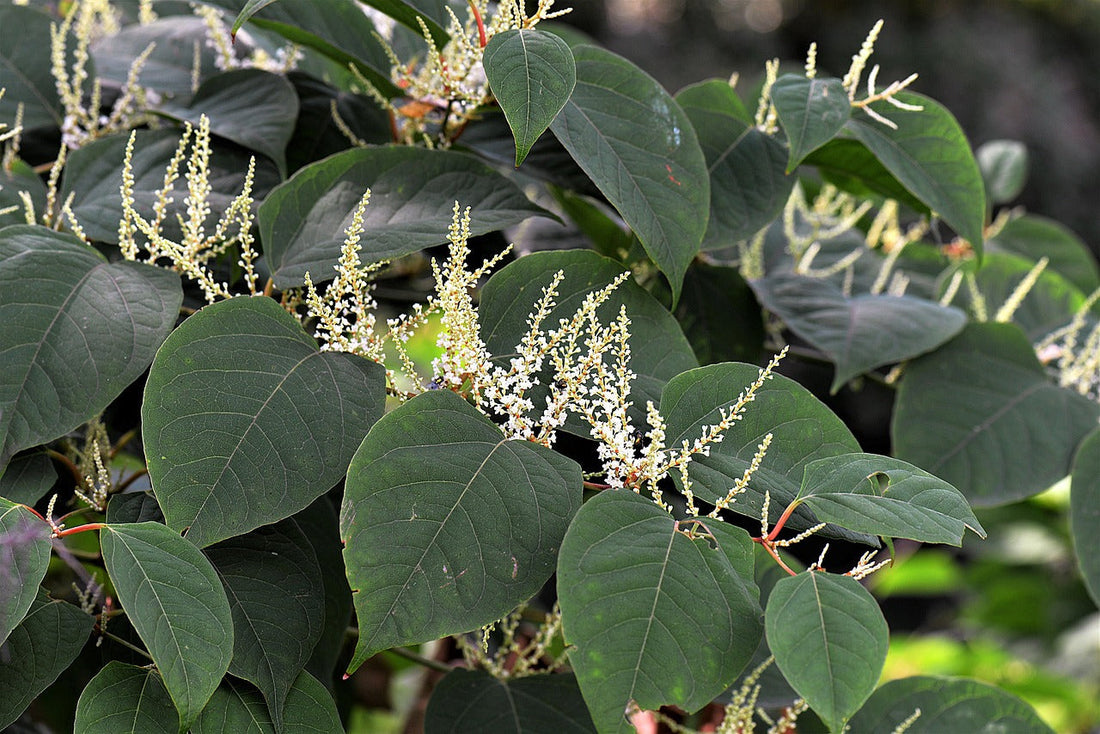
Knotweed gets its name from the numerous, distinct nodes (nodes) on its stems. Some species grow in deep shade but also in full sun, while others thrive at the edge of water or woodland. Many knotweeds are also impressive due to their abundant and extremely long-lasting blooms. Depending on the species, they appear in predominantly pink, red, and white shades from April until frost. Most knotweeds are summer or autumn bloomers, and some are even fragrant. Andre Stade, co-owner of the "Stauden Stade" company in Borken, has many knotweed plants in his collection and offers expert tips on different varieties and their uses.
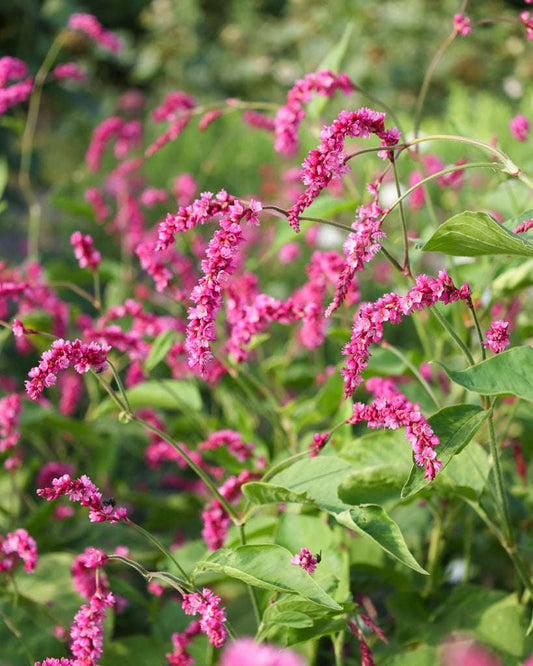
Oriental knotweed - Persicaria orientalis 'Cerise Pearls'
Oriental Knotweed is a fascinating plant that captivates with its exotic beauty and unique charisma. This variety is particularly distinguished by its bright pink pearl flowers, which bring contrast, dynamism, and richness to any garden and bouquet.
Details:
Sowing indoors/greenhouse: February to the end of March
Sowing outdoors: October to November
Germination time: 21-60 days below 10°C
Sowing depth: 1 cm
Height: 100-120 cm
Planting distance: 40 cm
Flower size: 2-5 cm
Flowering time: June to September
Soil: Loose, permeable soil
Fertilization: Compost
Location: Sun/partial shade
Water consumption: Medium
Growing tips:
Oriental knotweed requires a period of cold weather to germinate successfully. The germination process is slow but continuous and typically takes 21 to 60 days, depending on the prevailing temperatures. Indoor sowing is best done in a seed tray. Initially, a period of 2-4 weeks at a temperature of 18-22°C is recommended, followed by 4-6 weeks of cold weather, for example, in a refrigerator at around +4°C. Afterward, the seeds are gently warmed back to room temperature, which is particularly beneficial for the germination process.
Alternatively, sowing can be done in the garden in late summer or fall, with the plants simply left over winter. Germination then occurs in spring. Early sprouting often results in shorter, but more vigorously branched plants. It's important to pay attention to this specific germination process to ensure optimal conditions for growth.
Use:
cut flower
Bag contents :
approx. 100 seeds
Store in a cool, dry place.
The spotted knotweed â_x0080__x0092_ small and reliable
"The most well-known knotweed species is probably the spotted knotweed (Bistorta affinis)," says horticultural technician Andre Stade. This ground cover grows 10 to 20 cm tall and forms dense, low mats. It blooms from July until frost, as the whitish, club-shaped inflorescences change color from pink to dark red to brown during flowering, and rebloom repeatedly. "It thrives in partial shade in combination with woody plants," explains the perennial expert. "Gardeners should avoid dry, hot spots, as the spotted knotweed doesn't like that." Leaving the leaves on the ground in autumn provides additional frost protection, and the plants survive the winter well. Among the spotted knotweed, the Bistorta affinis 'Superbum' variety is a tried-and-true variety that initially has white flowers that later turn deep red, and in autumn, the foliage turns orange-red. It doesn't overgrow and combines beautifully with meadow iris (Iris sibirca). For a compact variety, Stade recommends the 'Darjeeling Red' variety, which grows only 15 to 20 cm tall, or the even shorter 'Dimitry' variety. The flowers of both varieties are initially pinkish-red and later turn deep dark red as they fade, thus retaining their attractiveness until frost.
Some knotweeds are colorful
Persicaria filiformis 'Variegatum' is a very striking knotweed species. Its yellow, green, and brown-red spotted leaves look as if red, white, and brown had been painted onto green leaves with a brush. This ornamental foliage plant brings color to even dark corners of the garden from spring through autumn. In summer, the leaves' coloring is particularly intense. Persicaria filiformis grows to approximately 70 cm tall, grows vertically upwards, and is completely uncomplicated. From September to October, the delicate, red, thread-like spike flowers appear, dancing gracefully above the foliage. "Cover the plant with some brushwood for protection in winter," advises Stade.
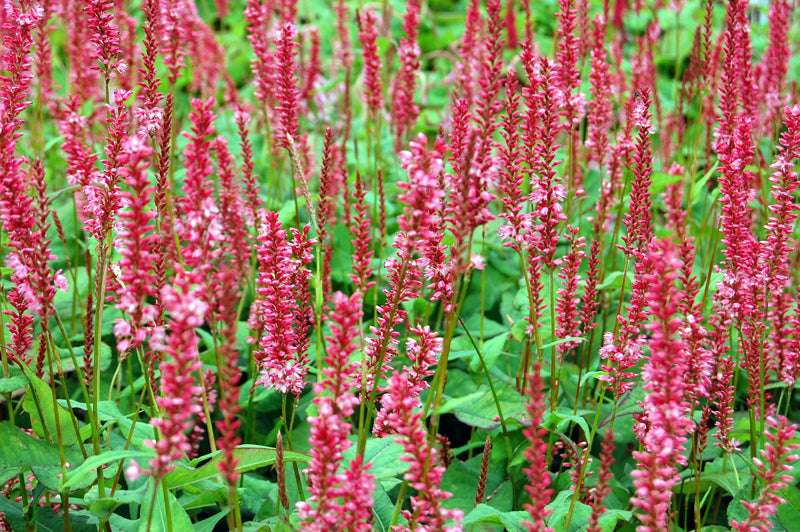
Perennial tip – The garden candle knotweed
A particular favorite of Andre Stade's is the garden knotweed (Bistorta amplexicaulis). Its candle-shaped flowers bloom from July to October. The beautiful, dense foliage appears very early and quickly covers the ground, reducing weeding. "It's actually the ideal plant for people who want to enjoy their garden," says the perennial gardener. This knotweed tolerates both dry and moist soils, thrives in both sun and partial shade, and can even survive extended dry periods without concern. Waterlogging should, however, be avoided, especially in winter. Slugs also dislike it, which saves the gardener a lot of work. "This all-rounder among knotweeds belongs in every nursery's standard range thanks to its ease of care, rapid, non-invasive growth, and attractive, long-lasting candle-shaped flowers," says Stade. Worth mentioning is the variety 'Album' (Bistorta amplexicaulis), which produces white flower spikes approximately 90 cm high. It is very hardy and ideal for mixed perennial plantings. The variety 'Speciosum' (syn. 'Firetail') is also an eye-catcher. It displays its 120 cm tall scarlet flower spikes from July to October. A smaller variant is the variety 'Blackfield'. The bright blood-red flowers remain somewhat smaller at 70 cm and can thus be easily combined with other bedding perennials. The variety 'Inverleith' is ideal as a ground cover. It grows to only 60 cm tall, blooms red with short spikes, and forms a very dense carpet of foliage.
Attractive companion plants for knotweed
"The effect of perennial knotweed can be further enhanced by the right companion perennials," explains Stade. The spotted knotweed (Bistorta affinis) is often used as a ground cover; it can be designed with partners that have different leaf and flower shapes to create attractive planting areas. Evergreen bergenias (Bergenia), hostas (Hosta), or grasses (Carex) are ideal here, for example, against a backdrop of woody plants. The candle knotweed (Persicaria amplexicaulis) adds vertical accents to mixed plantings. Its flowers rise steeply and clearly from the foliage. The candle knotweed grows vertically upwards and can therefore be planted well with other perennials such as autumn anemones (Anemone hupehensis or Anemone japonica), dark-leaved October candles (Cimicifuga), or phlox to create harmonious late summer and autumn displays. “In white gardens, the variety Bistorta amplexicaulis ‘Album’ together with white-flowering autumn anemones (Anemone japonica), grey-leaved grasses (Festuca), autumn asters (Aster divaricatus) or white phlox (Phlox paniculata) creates elegant combinations,” enthuses the perennial lover.
Knotweeds for the natural garden
A knotweed for a natural garden is the meadow knotweed (Bistorta officinalis), also known in Switzerland as "toothbrush." In the wild, it can be found in large numbers in damp valley floors or mountain slopes. In the garden, this extremely robust and vigorous plant is particularly recommended for nutrient-rich, moist soils in sunny to partially shaded locations. "A very uncomplicated plant," says Andre Stade, "which blooms with pink flower spikes from May to July and promises further blooms in the summer." Growing to a height of approximately 60 to 100 cm, the plant is particularly well-suited for watersides. The variety "Superbum" (Bistorta officinalis) forms compact leaf tufts and produces slightly larger, intense pink flowers. Its branching makes it more floriferous than its congeners. It grows to a height of 80 cm. “Although the form does not grow rampantly, you should leave some space between it and other plants,” warns perennial gardener Stade.
Did you know?
"The range of perennial knotweeds also includes some giants," explains Andre Stade. One impressive large perennial is the mountain knotweed (Aconogonon speciosum 'Johanniswolke'). It can grow up to two meters tall, is very sturdy, and does not spread rampantly, making it ideal as a backdrop in plantings, as a privacy screen, or even as a woody substitute. "Its creamy-white flowers create a cloudscape in the garden from June to August," explains the perennial enthusiast. The flowers even have a slightly sweet scent. As they fade, they turn pale pink, later brownish, and look attractive well into autumn. Flower shoots often emerge laterally from the upper nodes, ensuring rebloom. Stade has found that although the mountain knotweed does not spread rampantly, it does require some space in the garden over the years. It's a real eye-catcher for spacious gardens, remaining attractive until frost and playing a dominant role in a planting as a solitary plant or in a group. The 'Johanniswolke' variety is named after its flowering date, June 21st, on St. John's Day.
TEXT: GMH/BdS

